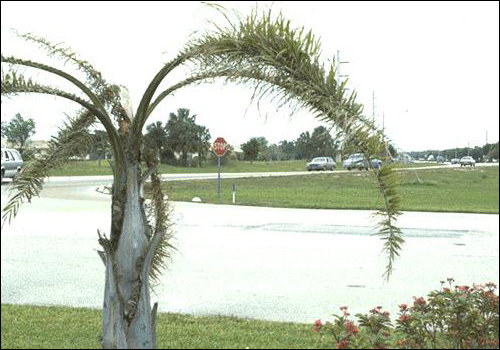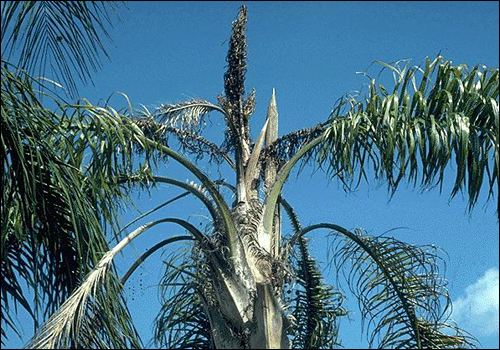Deficiency of Manganese
There is probably a deficiency of Manganese. Manganese-deficient plants usually exhibit varying degrees of interveinal chlorosis, accompanied by interveinal necrotic streaking on the newest leaves or leaflets. As the deficiency progresses, the necrosis becomes more extensive and new leaves may emerge frizzled or reduced in size. Leaves do not become totally yellow, which differentiates a Manganese deficiency from Iron deficiency. Death of the plant usually follows quickly if not treated. Manganese deficiency is very common for many species of palms and cycads in Florida, especially when plants are grown in alkaline soils.
Plant is a monocot or noncotyledonous (includes palms, Pandanus, draceanas, yuccas, cycads and others
- Symptoms are most severe on the newest leaves
- New leaves are reduced in size
- New leaves exhibit interveinal chlorosis with necrotic streaks. In severe cases, new leaves emerge entirely withered or frizzled and greatly reduced in size
- New leaves are reduced in size
Manganese Deficiency in Paurotis Palm (Acoelorrhaphe wrightii)

Manganese Deficiency in Alexander Palm (Archontophoenix alexandrae)
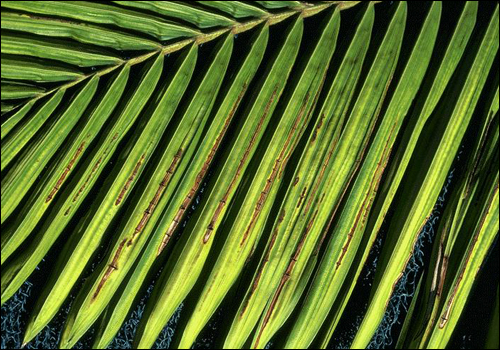
Manganese Deficiency in Coconut Palm (Cocus nucifera)

Manganese Deficiency in Sago Palm (Cycas revoluta)
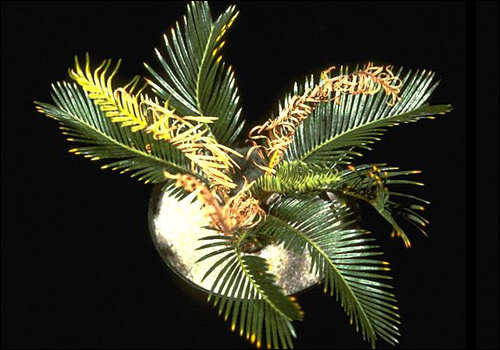
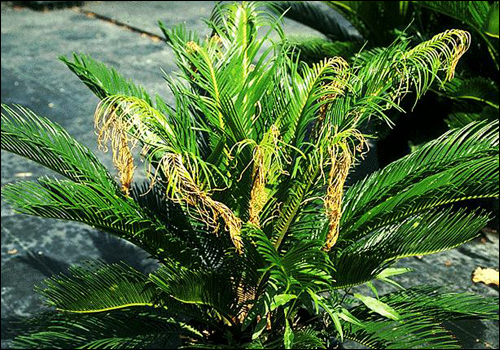
Manganese Deficiency in Royal Palm (Roystonea regia)
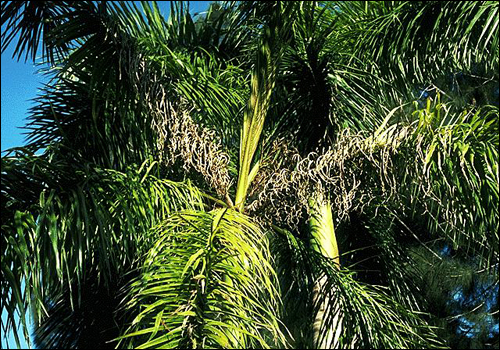
Manganese Deficiency in Queen Palm (Syagrus romanzoffiana)
